Blog
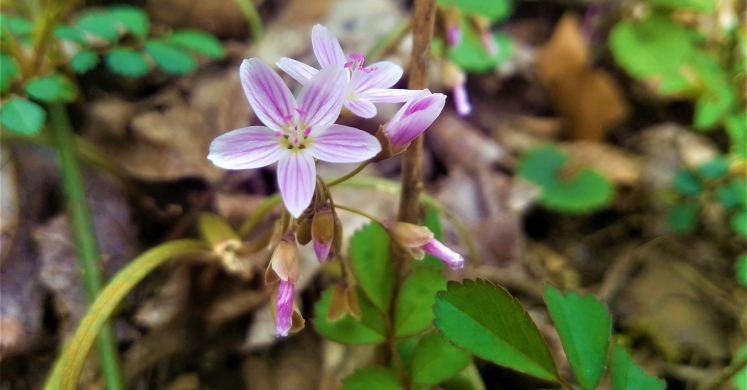
#bioPGH Blog: No Ordinary Walk in the Park
 A resource of Biophilia: Pittsburgh, #bioPGH is a weekly blog and social media series that aims to encourage both children and adults to reconnect with nature and enjoy what each of our distinctive seasons has to offer.
A resource of Biophilia: Pittsburgh, #bioPGH is a weekly blog and social media series that aims to encourage both children and adults to reconnect with nature and enjoy what each of our distinctive seasons has to offer.
This weekend, my husband and I hiked in a park that was thankfully not crowded (social distancing even in the outdoors!), and the signs of spring were a welcome distraction in the midst of an unusually difficult few weeks. Wildflowers were blooming, birds were calling, and the creek in the basin of the parked gushed merrily past a patch of skunk cabbage. The beauty of nature certainly has its own brand of magic that seems to ease a busy mind. Indeed, time in nature has been documented to reduce stress, lower blood pressure and lift moods. If you are feeling a bit down right now, will you tagalong virtually to see what we found? I hope it brings you a smile.
Virginia springbeauty (Claytonia virginica)
These delicate little flowers were in perfect bloom this past weekend. The can range from white with only faint pink stripes to a very bright pink! Springbeauties can also be called “fairy spuds,” which is most likely a reference to their edible starchy tuber found just below the ground.
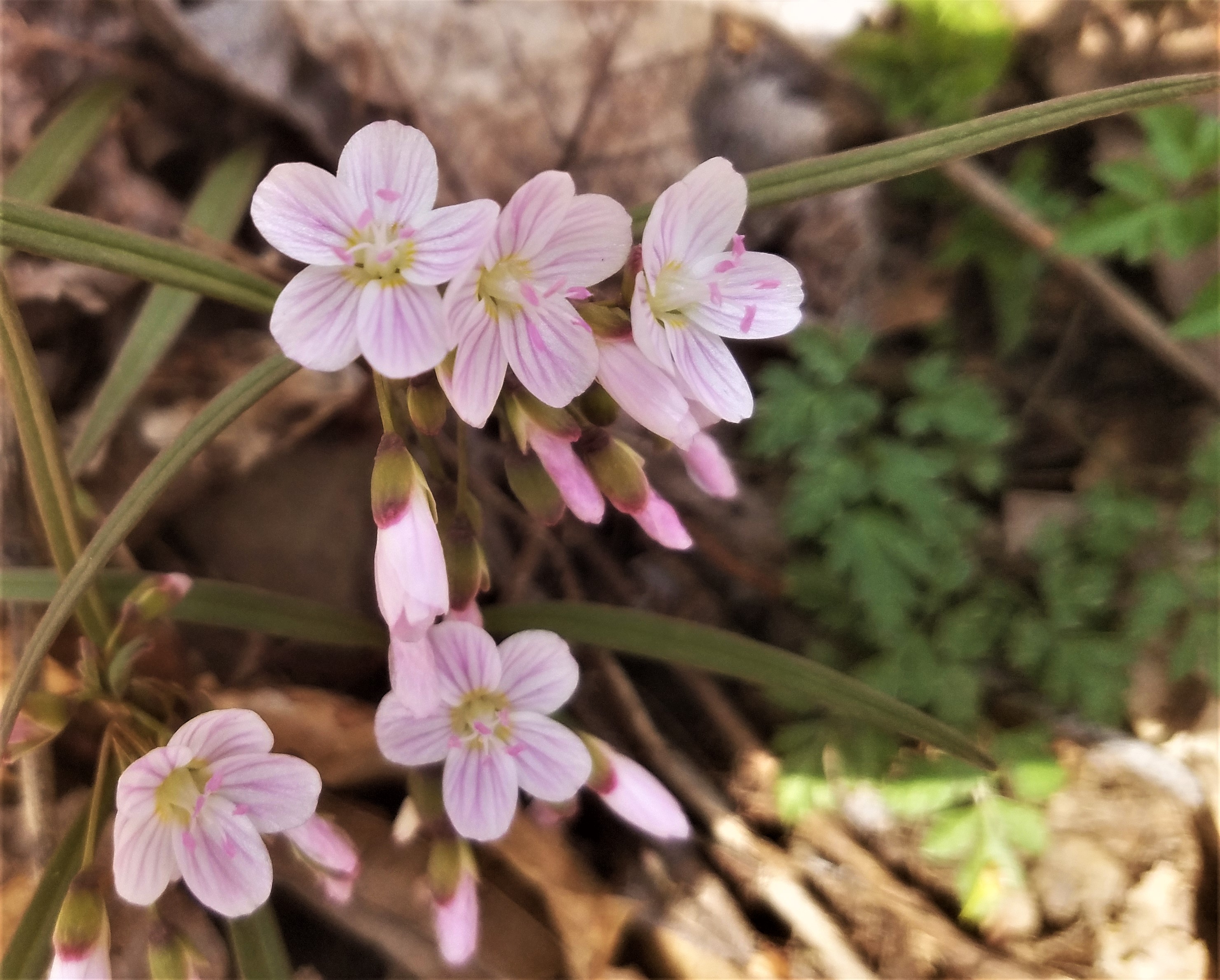
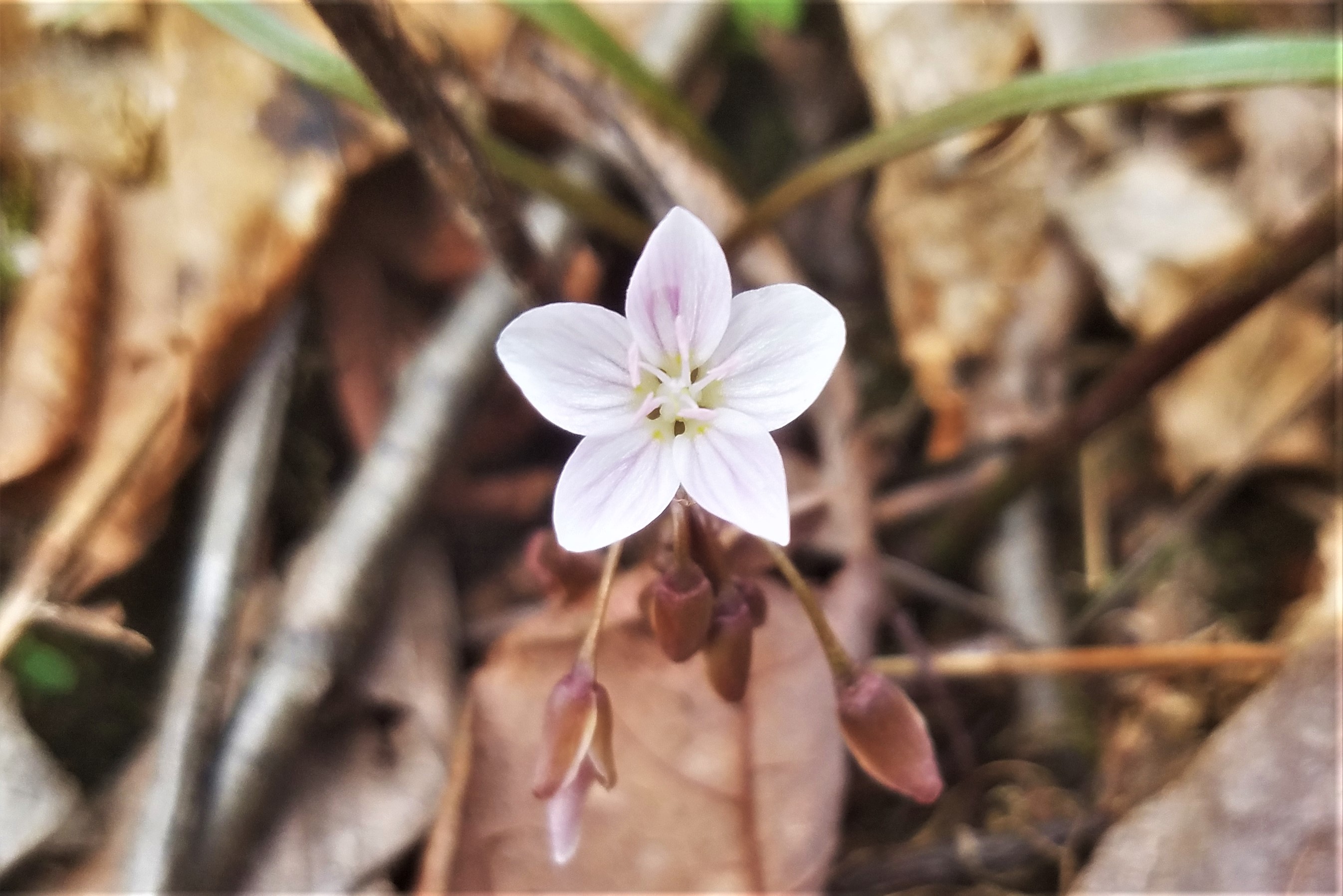
Mayapple (Podophyllum peltatum)
Dormant in the summer, now is the time to see mayapples! Their umbrella-like foliage wasn’t quite fully extended this past weekend at the particular park that we visited, but many around the area are already in full show. If you notice a second, smaller ring of leaves under the prominent “umbrella”, that is indicative of a second-year plant which will flower later in the spring.
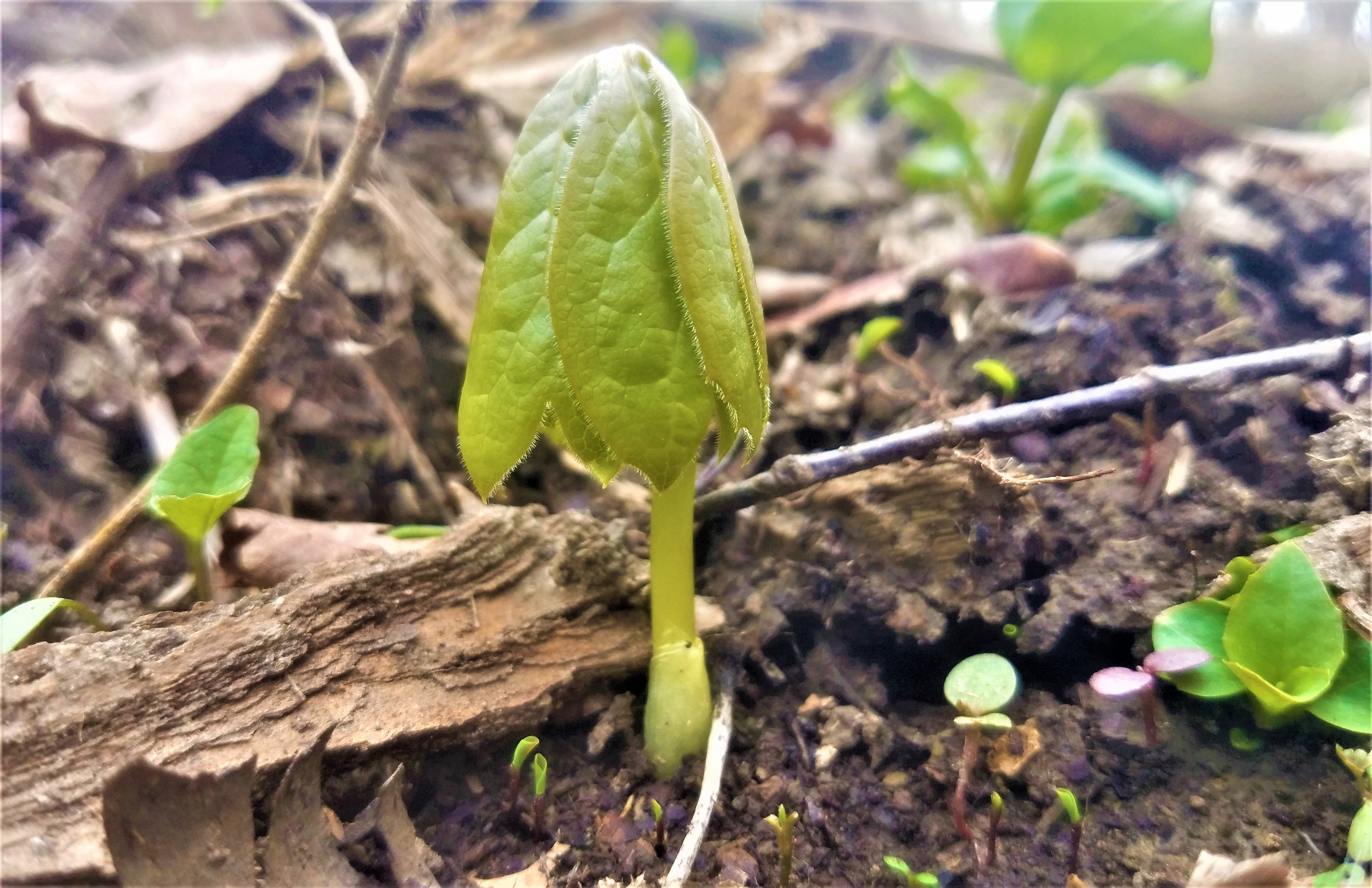
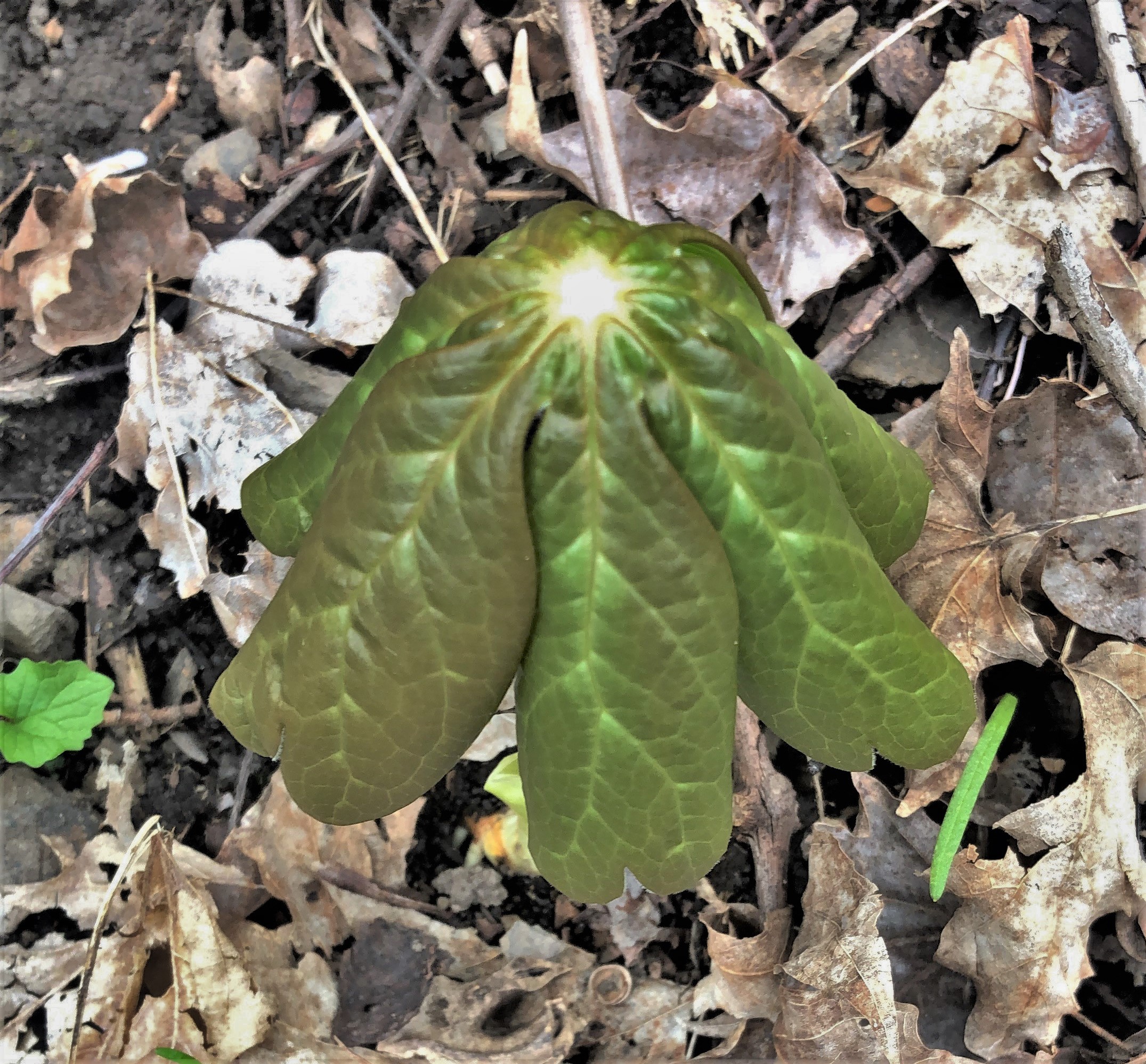
Pitch Pine (Pinus rigida)
I am still learning to identify trees by their bark, but the deep fissures and plate-like bark of pitch pine is an easy one to learn! We also noted the three pine needles per little bundle (fascicle), and the lovely pine cones, which take about two years to mature.
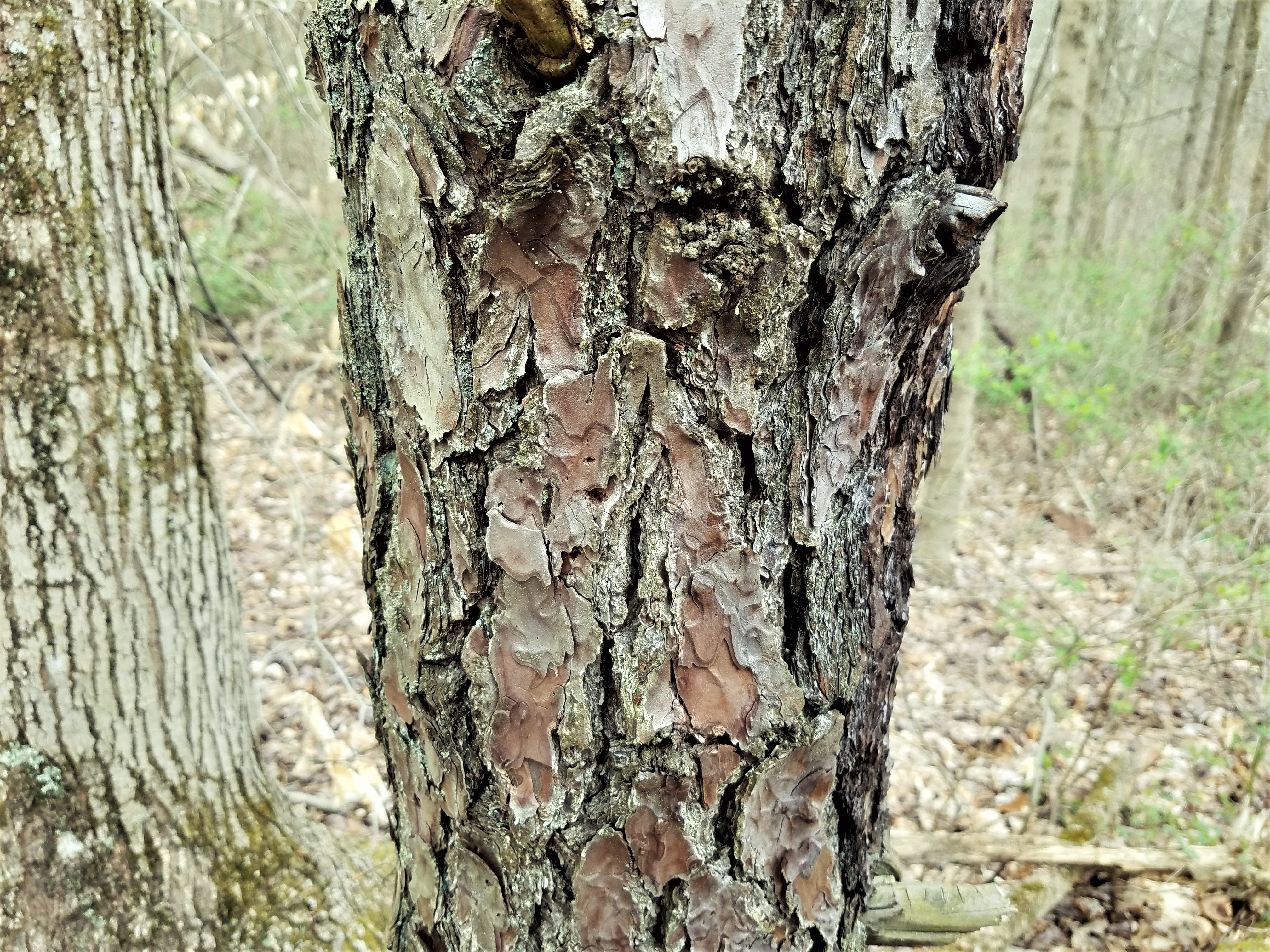
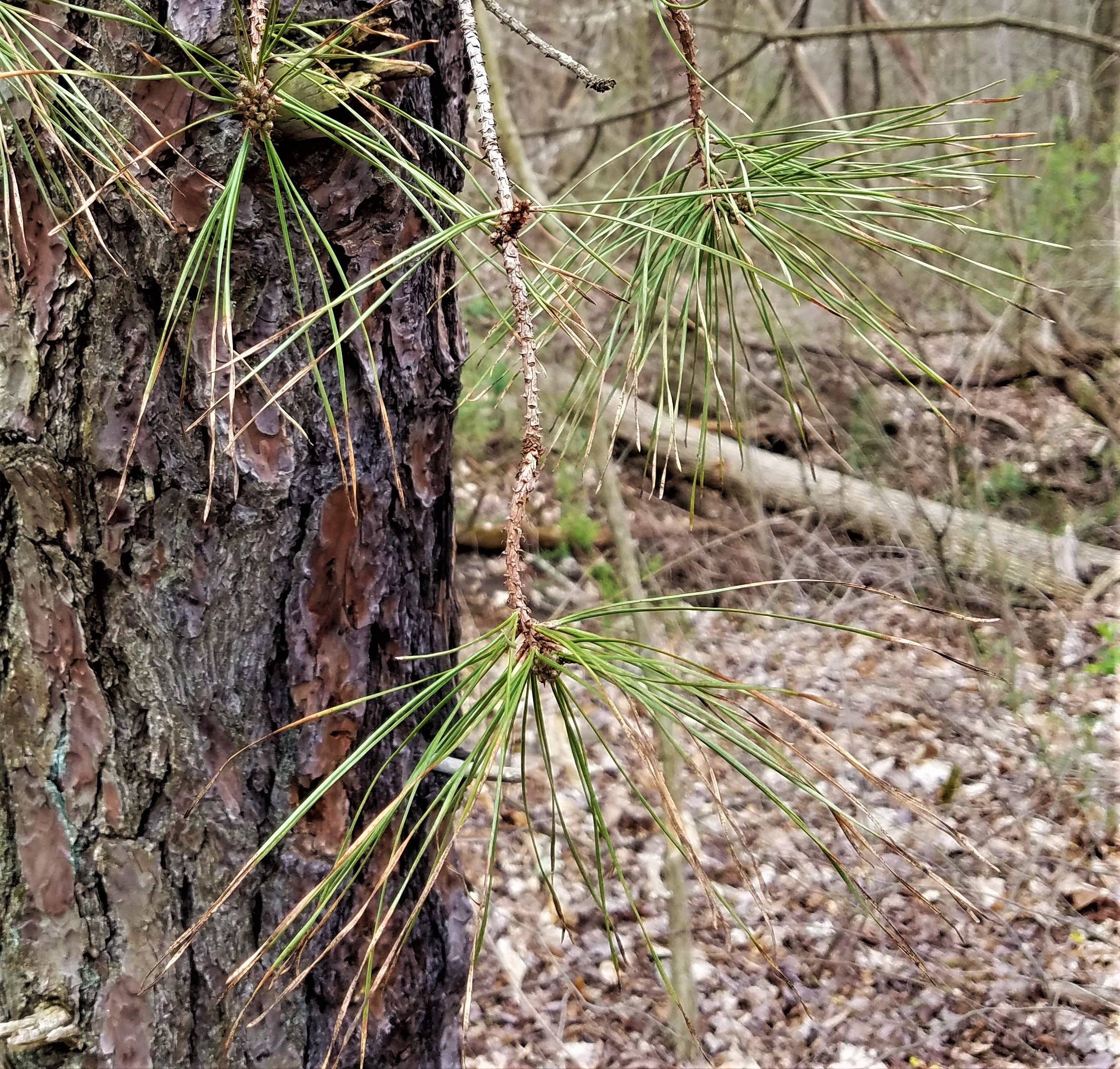
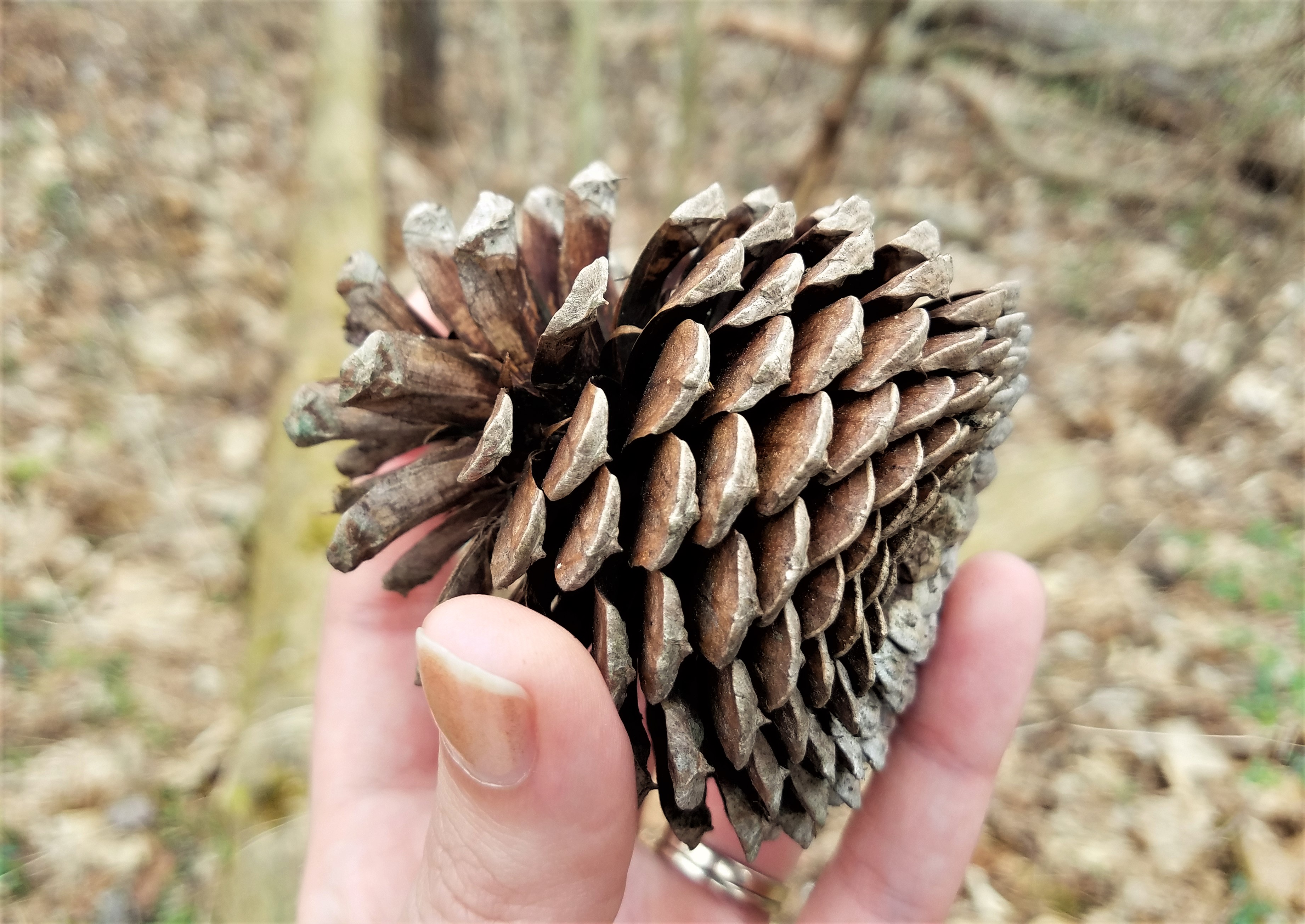
Yellow downy violet (Viola pubescens)
We normally associate violets with the color…well…violet, but there are a number of yellow species, including this one! This little flower is often found in plant communities with trillium, and we did spy its oft-neighbor nearby (though not blooming yet.)
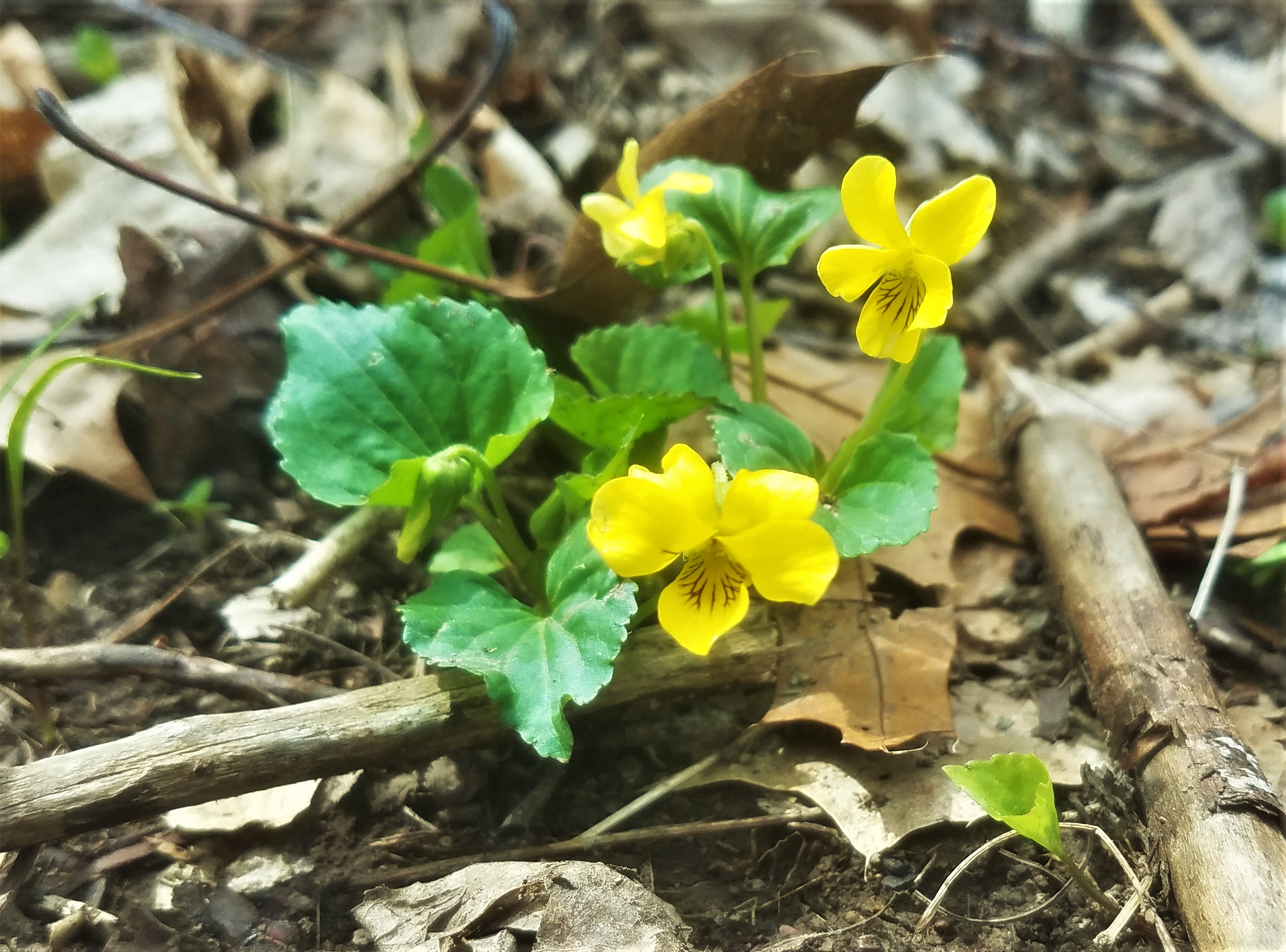
Skunk Cabbage (Symplocarpus foetidus)
This is my favorite oddball plant! Skunk cabbages can bloom as early as late February, even with frost and snow on the ground, and their fleshy cluster of flowers (called a spadix) generates its own heat. These skunk cabbages are well past blooming, but are still growing in a nice damp area — their own little skunk cabbage patch!
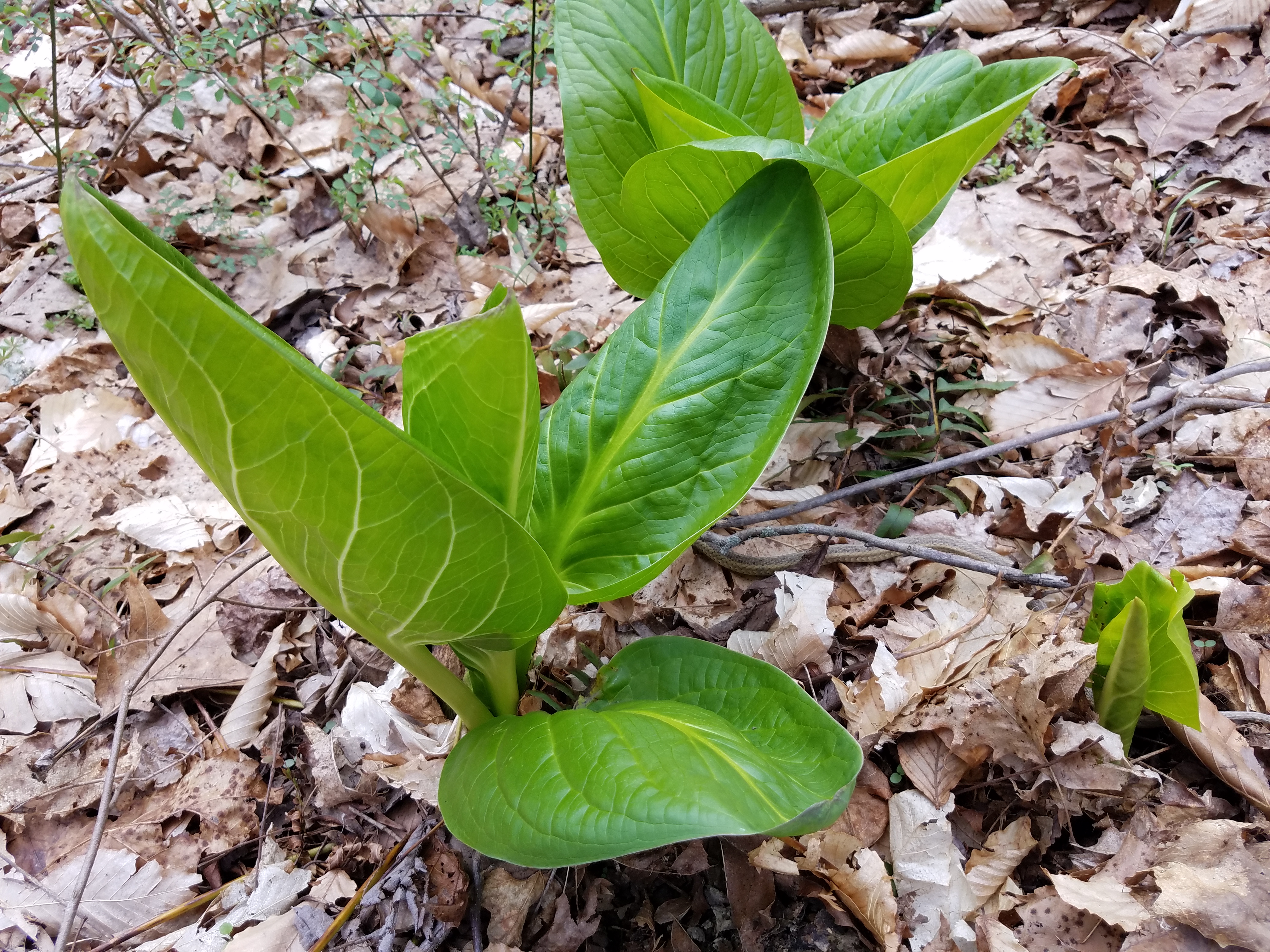
Bonus: Can you find the half-hidden snake?
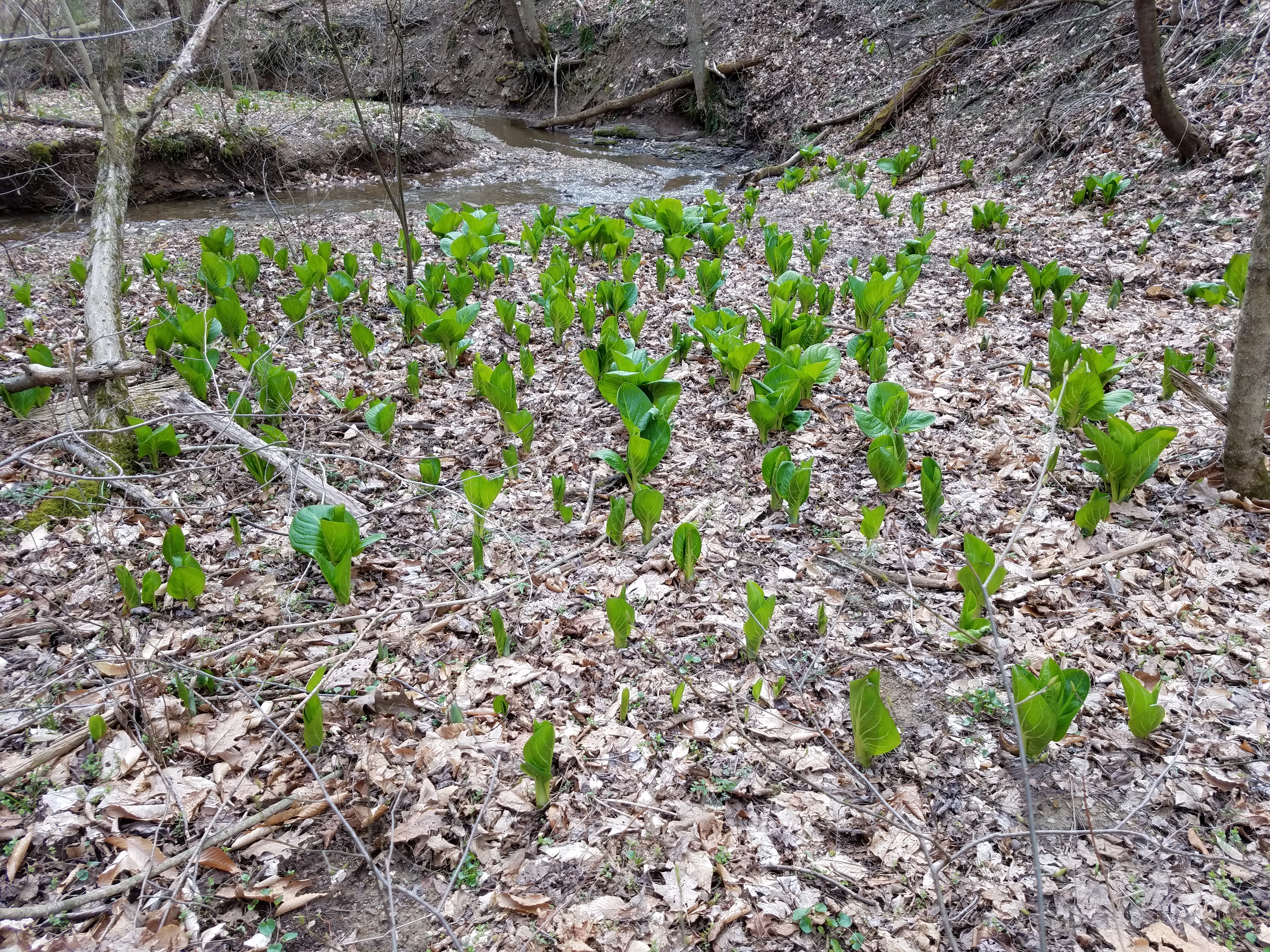
Common blue violet (Viola sororia)
We found a few patches of violets at the edge of meadow and forest habitats—which makes sense since they prefer partial sun. The flowers are edible in moderation.
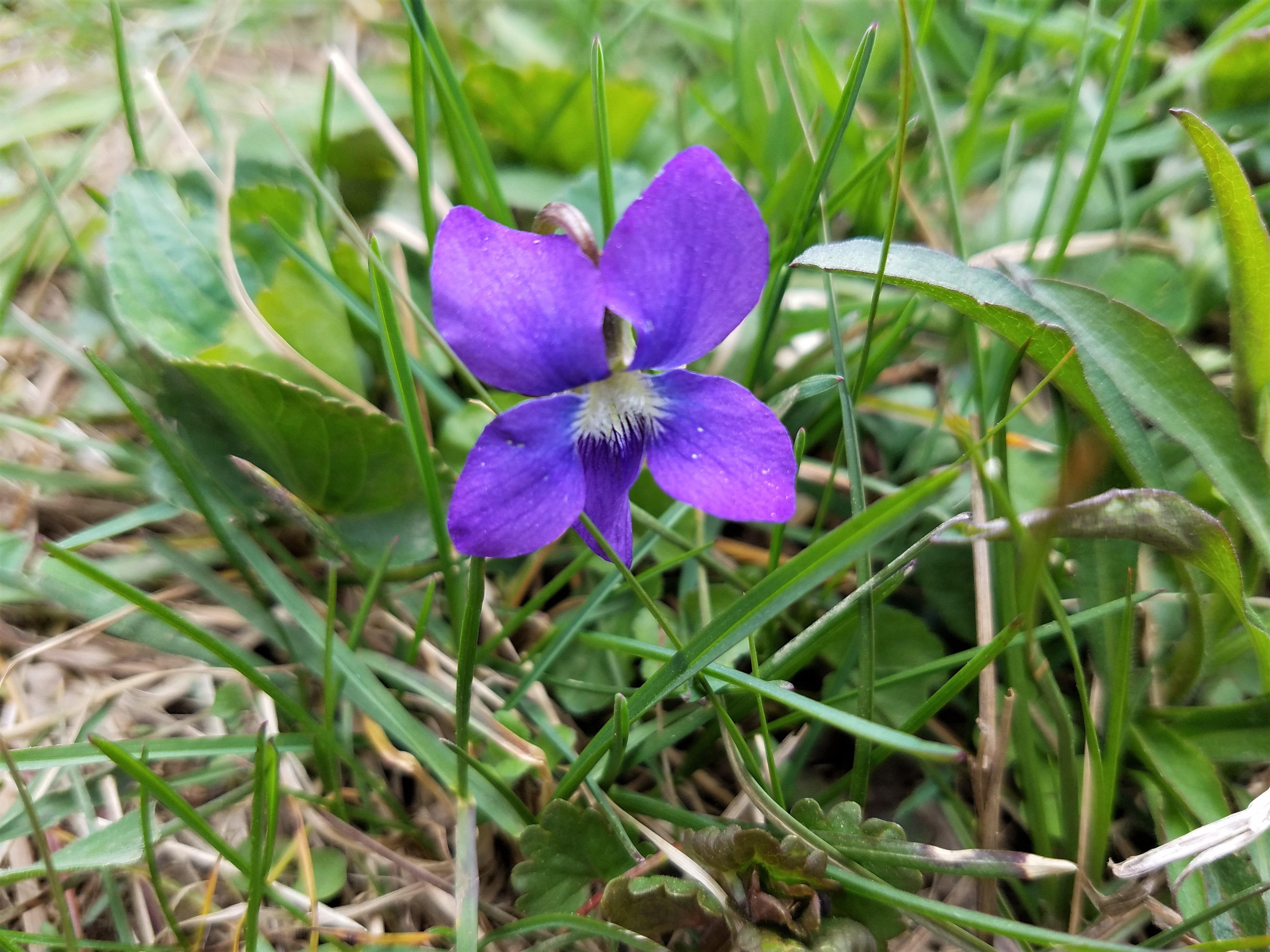
By the way, friends, if you feel like staying home and social distancing has been difficult, you are not alone — it’s hard! On a biological level, we humans are hard-wired for our social support networks, especially in difficult times. It is stressful for us to remain separated from family and friends. In addition, many cannot stay at home but wish to. Still others are hoping and praying for loved ones. This is a challenging time all around. With everything else going on, I truly thank you for choosing to spend the past few minutes with me, and I hope this little dash of nature lifted your spirits. We’re in this together!
Connecting to the Outdoors Tip: If you aren’t using the iNaturalist app already, now is a great time to get started. It’s a great excuse to go outside and check what sorts of life you can find in your own backyard or in nearby parks (provided you are maintaining proper distancing.) The iNaturalist City Nature Challenge is coming up later in April, and we could all use a collaborative appreciation of the outdoors right now!
Continue the Conversation: Share your nature discoveries with our community by posting to Twitter and Instagram with hashtag #bioPGH, and R.S.V.P. to attend our next Biophilia: Pittsburgh meeting.

